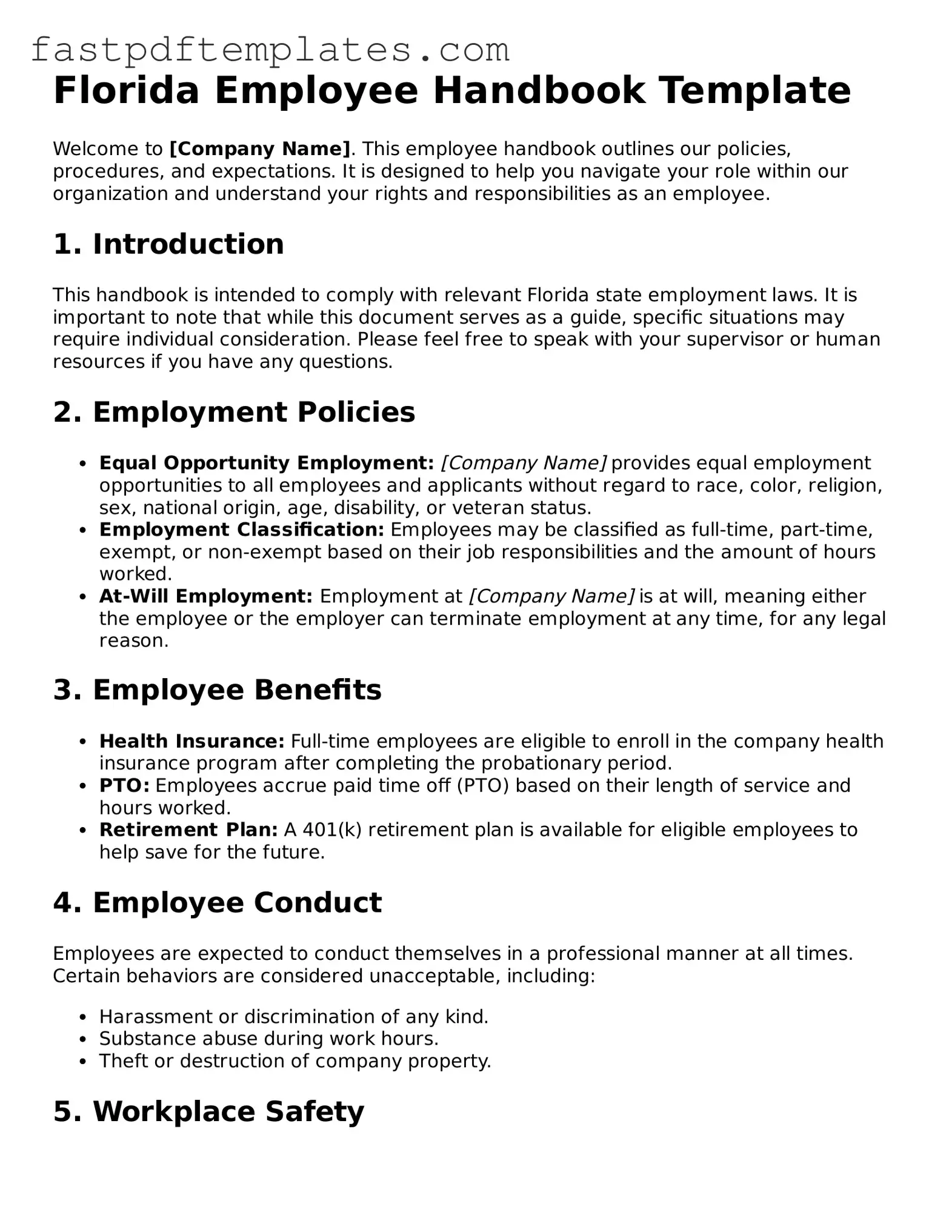The Florida Employee Handbook form shares similarities with the Employee Manual. Both documents serve as comprehensive guides for employees, outlining company policies, procedures, and expectations. An Employee Manual typically includes sections on workplace conduct, benefits, and disciplinary actions, much like the Florida Employee Handbook. Both documents aim to ensure clarity and consistency in communication between employers and employees, fostering a better understanding of workplace norms.
Another document akin to the Florida Employee Handbook is the Orientation Guide. This guide is often provided to new hires during their onboarding process. It offers essential information about the company culture, job responsibilities, and resources available to employees. Like the Employee Handbook, the Orientation Guide sets the tone for the employee's experience and helps them acclimate to their new environment.
The Policy and Procedure Manual is also similar to the Florida Employee Handbook. This manual focuses specifically on the rules and regulations governing employee behavior and company operations. It details procedures for various situations, such as reporting harassment or requesting time off. Both documents aim to create a safe and efficient workplace by clearly outlining expectations and protocols.
In addition, the Employee Rights and Responsibilities document shares common ground with the Florida Employee Handbook. This document emphasizes the rights of employees under federal and state laws, including anti-discrimination and wage laws. While the Employee Handbook may touch on these rights, the Employee Rights and Responsibilities document provides a more focused overview, ensuring that employees are aware of their legal protections.
The Code of Conduct is another document that parallels the Florida Employee Handbook. This code outlines acceptable behaviors and ethical standards within the workplace. It addresses issues such as conflicts of interest, confidentiality, and respect among colleagues. Both documents emphasize the importance of maintaining a professional environment and provide guidelines for employees to follow.
The Training Manual can also be compared to the Florida Employee Handbook. While the Employee Handbook provides a broad overview of company policies, the Training Manual focuses on specific skills and knowledge required for job performance. It often includes step-by-step instructions and best practices, ensuring that employees are well-prepared to fulfill their roles effectively.
Similar to the Florida Employee Handbook is the Safety Manual. This document specifically addresses workplace safety protocols and emergency procedures. It provides guidelines for maintaining a safe work environment and outlines the responsibilities of both employees and employers. Both documents aim to protect employees and reduce the risk of accidents or injuries on the job.
Lastly, the Benefits Guide bears resemblance to the Florida Employee Handbook. This guide details the various benefits offered by the employer, such as health insurance, retirement plans, and paid time off. While the Employee Handbook may summarize these benefits, the Benefits Guide offers a more in-depth look, helping employees understand their options and make informed decisions about their benefits.
